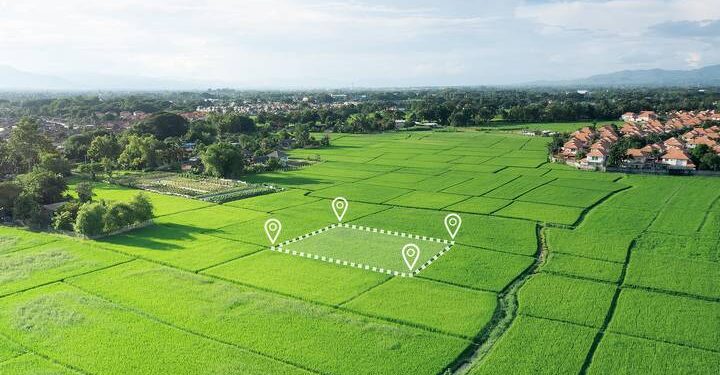8 Different Physical Characteristics of Land

Land is the solid surface that supports life on our planet. It gives a base for plants to grow and homes for countless creatures. Land helps create diverse environments.
Land is critical as it is necessary for our survival. We need it for farming, building, and living. It also provides open spaces for fun and rest. To keep Earth’s balance, we must protect land, keeping air, water, and living things safe. Preserving land for a sustainable future is very critical.
For land to be suitable, it must have healthy features like rich soil, enough water sources, and balanced shapes on the surface. It is vital to care for the land with responsible actions that keep its beauty and lessen human effects. Great land encourages people to work alongside nature, respecting the balance that supports all life alive on Earth.
Here are the eight physical characteristics of land.
Characteristic #1: Soil Quality
Soil quality focuses on the soil composition and well-being in specific areas. Healthy soil is nutrient-rich, drains appropriately, and supports plant growth. This makes it vital for agriculture, gardening, or building purposes.
Texture, pH balance, organic content, and helpful microorganisms contribute to soil quality. Farmland with superior soil ensures the thriving of various plants, while poor-quality soil may need significant improvements to become fruitful.
Characteristic #2: Topography
Topography pertains to the physical aspects and arrangement of land’s surface. It comprises elevation, contours, slopes, and the overall form of the terrain. A parcel of land’s topography is critical when assessing its possible uses and appropriateness for particular intentions.
For instance, construction projects often favour flat surfaces, whereas sloping or elevated land suits recreational activities like hiking or skiing better. As a land trait, topography greatly influences drainage patterns, ease of access, and visual appeal. Additionally, it prevents erosion, which is essential for maintaining and conserving land.
Characteristic #3: Water Availability
Water availability refers to the presence and accessibility of water resources for different purposes. This concept is easy to grasp: how much water is obtainable and ready for various needs. Water availability is crucial in our daily lives, agriculture, ecosystems, and industry. Managing and ensuring sufficient water resources becomes increasingly vital as the world faces climate change and population growth.
Characteristic #4: Vegetation Cover
Vegetation cover encapsulates plant life on Earth’s surface. Simply put, it signifies any area’s richness and variety of greenery. Vegetation cover’s importance is simple: it relates to ecosystem health, land stability, and global climate regulation.
Diving deeper into vegetation cover, we find diverse plant species thriving depending on region-specific conditions like rainfall amounts and climate types. Additionally, human activities play a part. Deforestation or land conversion may reduce vegetation cover, while reforestation or conservation plans can foster growth.
Characteristic #5: Climate
The climate is the usual weather patterns in a specific region, like temperature, humidity, rain, wind, and air pressure. Think of it as the average weather a place has experienced over a long time, like decades.
Climate gives us an idea of what to expect season-wise and the general weather conditions. It’s crucial because it shapes ecosystems, affects farming and human activities, and determines what plants can grow.
Characteristic #6: Geological Composition
Geological composition is the makeup of the Earth’s surface and beneath it in a specific land area. It includes rocks, minerals, sediments and other features of the Earth’s crust. Knowing the geological composition is critical for assessing land since it impacts land use, construction, and how we care for the environment. Different geological compositions affect land stability, mineral resources, and risks like landslides or earthquakes.
Land can have very different geological compositions in one region. Some areas have primarily sedimentary rocks, while others have igneous or metamorphic rocks. Each type of geological composition has unique qualities that influence how water travels underground. These qualities influence soil quality and whether resources like minerals or fossil fuels are below the surface.
Characteristic #7: Size and Shape
Discussing size and shape, we delve into the physical measurements and contours of objects or entities. It’s an essential way to comprehend and classify things in our surroundings. Size deals with an object’s length, width, and height, while shape pertains to its overall form or outline.
Geometric shapes like circles and squares or irregular ones, like clouds and trees, help with categorization. Size and shape’s importance stretches across fields, from design and architecture to manufacturing and biology, as they influence how objects engage with their environment and are visually perceived.
Characteristic #8: Accessibility
The concept of accessibility revolves around how easily individuals can approach, use, or comprehend something, irrespective of their physical or cognitive capacities. Adhering to inclusive design principles from the beginning makes equal participation and access to information and resources possible.
Accessibility extends further than physical spaces; digital accessibility ensures that digital platforms such as websites and software are user-friendly for everyone. Providing alternative formats, navigational clarity, and assistive technologies cater to diverse needs and capabilities.


